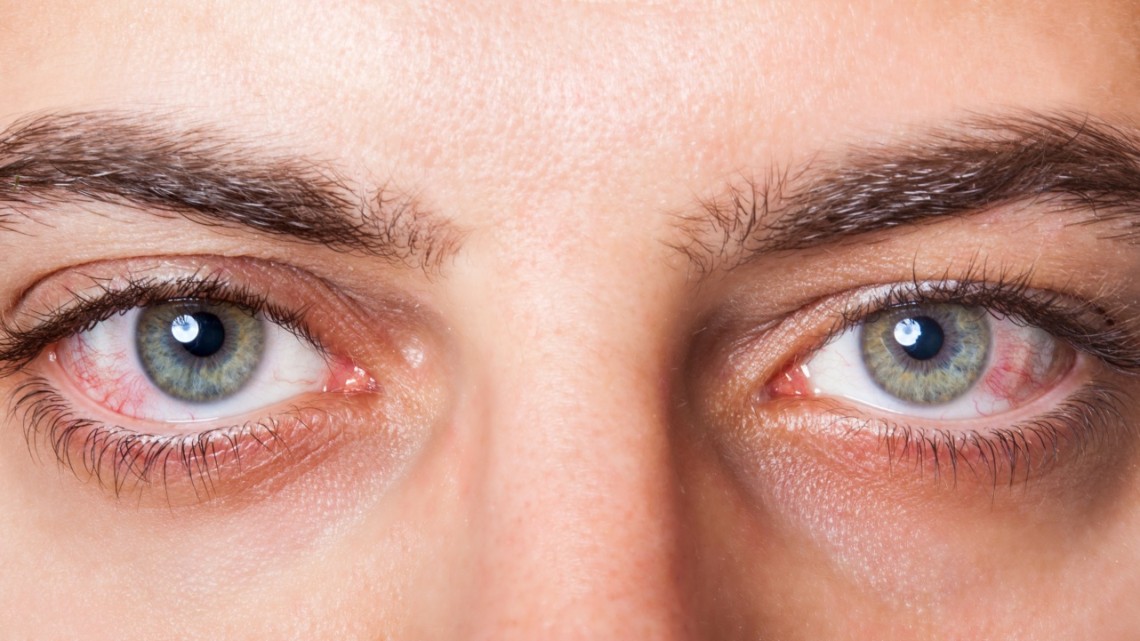List of eye diseases and their symptoms
Read this article to learn the warning signs and symptoms of some common vision and eye problems, such as dry eyes, conjunctivitis, cataracts, glaucoma, and retinal detachment.
Dry eyes syndrome
Dry eye syndrome, or dry eye disease, is a familiar eye problem that arises when the tear glands are unable to make enough tears or they make tears of poor quality. As a consequence, your eyes cannot remove dust and other irritants.
Symptoms:
- The most common symptoms of dry eye syndrome include stinging, burning, pain, and redness in the eyes, watery tearing or stringy mucus in the eyes.
- You may observe that your eyes get exhausted faster than they used to or you may find it difficult to read or sit at the computer for long hours.
- You may also experience the feeling of having sand in your eyes and blurry vision.
Rarely, they can cause loss of vision.
Conjunctivitis
Conjunctivitis, commonly known as “red eye” or “pink eye,” is an eye disorder wherein the outer membrane of your eyeball (conjunctiva) gets infected or becomes swollen. Blood vessels in your conjunctiva become inflamed which gives your eye the red or pink colour.
People of all ages can get conjunctivitis. It can be caused due to allergies, infection, or exposure to chemicals and irritants.
Symptoms:
Since bacterial or viral conjunctivitis is very contagious, it’s important to pay attention to your symptoms. Talk with your doctor about treatment if you experience:
- pink or red eyes
- gritty or sandy feeling in your eyes
- watery or thick discharge that fabricates up on your eyes at night
- itchiness or pain in your eyes
- anomalous quantity of tears
Cataracts
A healthy lens completely allows the light pass through it to the retina to enable the formation of images at the back where they are processed. In case of cataract, cloudy spots known as cataracts, develop within the eye lens and do not let the light to through the lens as easily and, thus, you can’t see as well.
Symptoms:
Initially, symptoms may be undetectable or extremely minor. However, any visible change in vision may be reason to worry, and should be brought to the awareness of an eye care expert. Common symptoms of cataracts include:
- Cloudy or distorted vision
- Sensitivity to light and glare
- Recurrent prescription changes for glasses or contact lenses
- Poor vision at night
- Dimming and colour vision changes
- Dual vision in a single eye
Glaucoma
Glaucoma is a disease that injures the optic nerve of your eye. It occurs when excess of fluid builds up in the front part of your eye and exerts extra pressure resulting into damaging of the optic nerve. The optic nerve causes transmission of information from your eyes to your brain, and damage done to it can lead to serious vision loss, and in the worst case, blindness.
Symptoms
Glaucoma often builds up with no symptoms, making it impossible for patients to figure it out until considerable (and irreversible) damage has been done. Thus, it is vitally important to regularly be checked by an eye doctor for increased intraocular pressure.
In the case of acute closed angle glaucoma , symptoms will be unexpected and severe, such as:
- Distorted or cloudy vision
- Severe pain in the eye
- Headache
- Rainbow haloes
- Nausea or vomiting
Retinal detachment
Retinal detachment is a disease wherein the retina separates from the nerve tissues and blood supply under it. While painless, visually this has a clouding effect that seems like a gray curtain moving across the field of vision.
Retinal detachment is a treatable condition, but it must be taken care of without delay, or it can result in vision loss and in the worst cases, blindness.
Symptoms:
The following signs and symptoms can alert one to the likely arrival of retinal detachment:
- Blurred vision
- Eye floaters accompanied by eye flashes
- Cloudiness or blind spots in the field of vision









